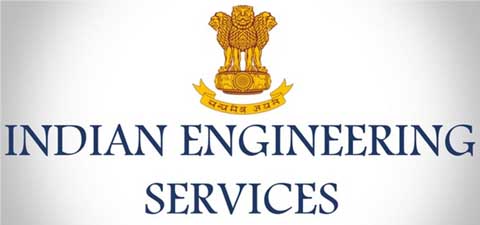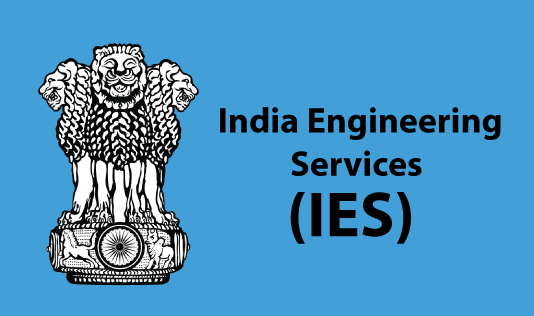ESE 2023 Notification Out, Registration Begins For UPSC
About
ESE 2023, Indian Engineering Services is one of the most sought-after careers for engineering graduates in India. Engineering Services Examination (ESE) is conducted annually by UPSC for the recruitment of engineers in four domains i.e. Civil, Mechanical, Electrical, and Electronics & Telecommunications. These recruitments are done for the techno-managerial posts.
Two stages (Prelims and Mains) of the UPSC ESE exam are offline to shortlist the candidates. The Preliminary exam is an objective paper, while the main is a conventional paper. Candidates who qualify for both Prelims Mains will be eligible to participate in the final round.
Eligibility criteria
Nationality:
A candidate must be either:
- A citizen of India or
- A subject of Nepal or A subject of Bhutan or
- A Tibetan refugee who came over to India before the 1st January 1962 with the intention of permanently settling in India or
- A person of Indian origin who has migrated from Pakistan, Burma, Sri Lanka, or East African countries of Kenya, Uganda, the United Republic of Tanzania, Zambia, Malawi, Zaire, Ethiopia, or Vietnam to permanently settle in India.
Provided that a candidate belonging to categories (b), (c), and (d) above shall be a person in whose favor a certificate of eligibility has been issued by the Government of India.
Age Limits:
A candidate for this examination must have attained the age of 21 years and must not have attained the age of 30 years on the 1st January 2020 i.e., he/she must have been born not earlier than 2nd January 1990 and not later than 1st January 1999.
The upper age limit of 30 years will be relaxable up to 35 years in the case of Government servants of the following categories if they are employed in a Department/ Office under the control of any of the authorities mentioned in column 1 below and apply for admission to the examination for all or any of the Service(s)/Post(s) mentioned in column 2, for which they are otherwise eligible.
- A candidate who holds substantively a permanent post in the particular Department/Office concerned. This relaxation will not be admissible to a probationer appointed against a permanent post in the Department/Office during the period of his probation. However, this relaxation will be admissible to a probationer so appointed provided he/she already retains a lien on a permanent post in a Department/Office under the control of any of the authorities mentioned in column 1 below.
- A candidate who has been continuously in a temporary service regularly in the particular Department/Office for at least 3 years on the 1st January 2020.
The upper age limit prescribed above will be further relaxable:
Up to a maximum of five years if a candidate belongs to a scheduled caste or a scheduled tribe.
Up to a maximum of three years in the case of candidates belonging to the OBC category.
Up to a maximum of five years if a candidate had ordinarily been domiciled in the state of Jammu & Kashmir during the period from 1st January 1980 to the 31st day of December 1989.
Up to a maximum of three years in the case of defense service personnel disabled in operations during hostilities with any foreign country or in a disturbed area, and released as a consequence thereof.
Up to a maximum of five years in the case of ECOs/SSCOs who have completed an initial period of assignment of five years of Military Services as on 1st January, and whose assignment has been extended beyond five years and in whose case the Ministry of Defence issues a certificate that they can apply for civil employment and they will be released on three months’ notice on selection from the date of receipt of an offer of appointment.
Up to a maximum of 10 years in the case of candidates of PwBD (viz. Locomotor Disability including Cerebral Palsy, Leprosy cured, Dwarfism, Acid Attack victims & Muscular Dystrophy and Hard of Hearing).
Minimum Educational Qualifications
The candidate must have obtained a degree in Engineering from a university incorporated by an act of the central or state legislature in India or other educational institutions established by an act of Parliament or declared to be deemed as universities under section 3 of the university grants commission act, 1956 or
Passed Section A and B of the Institution Examinations of the Institution of Engineers (India) or
Obtained a degree/diploma in Engineering from such foreign University/College/Institution and under such conditions as may be recognized by the Government for the purpose from time to time or
Passed Graduate Membership Examination of the Institute of Electronics and Telecommunication Engineers (India) or
Passed Associate Membership Examination Parts II and III/Sections A and B of the Aeronautical Society of India or
Passed Graduate Membership Examination of the Institution of Electronics and Radio Engineers, London held after November 1959
Provided that a candidate for the post of Indian Naval Armament Service (Electronics Engineering Posts and Engineer Group ‘A’ in Wireless Planning and Coordination Wing/Monitoring Organization) may possess any of the above qualifications or the qualifications mentioned below namely:
For Indian Naval Armament Service (Electronics Engg. Posts) – M.Sc. degree or its equivalent with Wireless Communication Electronics, Radio Physics or Radio Engineering as a particular subject.
For Indian Radio Regulatory Service – M.Sc. degree or its equivalent with Wireless Communication Electronics, Radio Physics or Radio Engineering as a subject or Master’s Degree in Science with Physics and Radio Communication or Electronics or Telecommunication as a special subject.
Exam Highlights
The IES exam is also called Indian Engineering Services or Engineering Services Examination (ESE). Indian Engineering Services is considered the most competitive and respected job for aspirants selected as engineers under the various ministries and departments of Govt. of India. The appointed IES engineers are given service in Group A departments to manage the technical and managerial functions under the Government of India. ESE exam is conducted by UPSC every year to recruit engineers in 4 engineering branches which are:
IES Civil Engineering
IES Mechanical Engineering
ESE Electrical Engineering
ESE Electronics & Telecommunication Engineering
The selection process for the IES exam comprises three stages, as given below:
- Stage 1:Preliminary Examination
- Stage 2:Mains Examination
- Stage 3:Interview
Highlights Of Exam
Before appearing for the examination, candidates are advised to go through the highlights of the IES exam to understand the upcoming exam. Further, we have provided the IES exam highlights in the table below.
| Exam Name | IES – Engineering Services Examination (ESE) |
| Conducting Authority | UPSC |
| Vacancies 2023 | 327 |
| Level of Exam | National |
| Selection | Preliminary, Mains, and Interview |
| Preliminary exam | Objective-type |
| Mains exam | Conventional |
| Exam Mode | Offline |
| Frequency | Annually |
| Qualifications | Engineering Branch |
| Age limit | 21 to 30 years |
| Application fee | Rs. 200 |
UPSC ESE 2023 Exam Date
UPSC has released the ESE 2023 notification. The Prelims exam will be conducted on 19 February 2023, while the ESE Mains will be conducted on 25 June 2023. The IES exam date schedule for both phases is given below:
| IES Exam Events | Dates |
| IES 2023 Notification Release Date | 14 September 2022 |
| Online Application Release Date | 14 September 2022 |
| Last Date of Online Application | 4 October 2022 |
| IES 2023 Preliminary Examination | 19 February 2023 |
| IES 2023 Mains Examination | 25 June 2023 |
ESE IES 2023 Apply Online:
If you fulfill the eligibility criteria, you can apply for the Engineering Services Examination (ESE) through the following steps.
Steps to Fill Online Application Form
- Step 1: Visit the official website of UPSC to apply online for the IES exam and click on the exam notifications tab.
- Step 2: Click on the apply online link for the UPSC ESE Prelims exam.
- Step 3: Click on Part I of the application form to obtain the registration number.
- Step 4: Log in with your Registration Number and date of birth to complete the ESE exam application form.
- Step 5: Upload the required documents.
- Step 6: Pay the required amount of the application fee as per your category.
- Step 7: Tick the declaration and submit the UPSC ESE online form.
- Step 8: Take a printout of the application form for further use.
IES Exam Fee:
You can pay the application fee for the ESE IES exam by visiting any branch of the SBI. The application fee for the UPSC ESE exam is as follows:
- Other Candidates: Rs. 200/-
- Women, SC, ST, and PWD candidates: Exempted
Documents needed for the Application form:
The documents required while submitting the ESE 2023 application form must be in JPG format, and the size of the documents must be 20 KB – 300 KB. The following documents must be uploaded in the correct format as given below for completing the application process for the ESE IES exam.
| Document Required | Dimensions |
| Photo | Minimum: 350 pixels (Height) x 350 pixels (Width)Maximum: 1000 pixels (Height) x 1000 pixels (Width) |
| Signature | Minimum: 350 pixels (Height) x 350 pixels (Width)Maximum: 1000 pixels (Height)1000 pixels (Width) |
Mode of Payment
The modes of payment for the IES exam are mentioned below.
- Deposit the application fee as cash in any SBI Branch, or
- SBI Net banking facility, or
- Use any Visa/Master/RuPay Credit/Debit Card
ESE 2023 Posts Name: Branch-wise:
Below is the list of all the ESE 2023 posts released for individual branches. Candidates who will successfully clear the IES exam will be appointed in the following profiles depending upon their performance in the examination.
Civil Engineering
- Indian Railway Service of Engineers.
- Indian Railway Stores Service (Civil Engineering Posts)
- Central Engineering Service
- Central Engineering Service (Roads), Group‐A (Civil Engineering Posts)
- Survey of India Group ‘A’ Service.
- AEE(Civil) in Border Road Engineering Service
- Indian Defence Service of Engineers
- AEE(QSC) in MES Surveyor Cadre
- Central Water Engineering (Group ‘A’) Service
- Indian Skill Development Service.
Mechanical Engineering
- Indian Railway Service of Mechanical Engineers
- Indian Railway Stores Service (Mechanical Engineering Posts)
- AEE in GSI Engineering Service Grade A
- Indian Defence Service of Engineers
- Indian Naval Armament Service (Mechanical Engineering Posts)
- Assistant Naval Store Grade‐I Officer (Mechanical Engineering Posts) in the Indian Navy
- AEE(Electrical Mechanical) in Border Roads Engineering Service(Mechanical Engineering Posts)
- Central Water Engineering (Group ‘A’) Service
- Central Power Engineering Grade A Service (Mechanical Engineering Posts)
- Indian Skill Development Service
- Central Power Engineering Grade B Service (Mechanical Engineering Posts)
Electrical Engineering
- Indian Railway Service of Electrical Engineers
- Indian Railway Stores Service (Electrical Engineering Posts)
- Central Mechanical and Electrical Engineering Service (Electrical Engineering Posts)
- Indian Defence Service of Engineers
- Assistant Naval Store Grade‐I Officer (Electrical Engineering Posts)
- Central Power Engineering Grade A Service(Electrical Engineering Posts)
- Defence Aeronautical Quality Assurance Service/SSO‐II (Electrical)
- Indian Skill Development Service
- Central Power Engineering Grade B Service (Electrical Engineering Posts)
Electronics Telecommunication Engineering
- Indian Railway Service of Signal Engineers
- Indian Railway Stores Service (Telecommunication/Electronics Engineering Posts)
- Grade A Indian Radio Regulatory Service
- Indian Telecommunication Service Grade A.
- Indian Naval Armament Service (Telecom and Electronics Engineering Posts)
- Asstt. Naval Store Officer Grade‐I (Electronics and Telecom Engg. Posts) in Indian Navy.
- Central Power Engineering Service Grade A (Electronics Telecom Engineering Posts).
- Indian Skill Development Service
- Junior Telecom Officer Grade B
- Central Power Engineering Service Grade B (Electronics Telecom Engineering Posts)
IES Exam Pattern 2023:
The exam pattern for the IES exam is given below in detail for the Prelims and Mains exams for CE, EE, ME, and EC.
UPSC ESE PrelimsExam Pattern
The ESE Prelims exam is the first stage of the selection process. The ESE Prelims Exam has two papers as tabulated below.
- It has only objective questions in paper-I and paper-II.
- The total mark in the UPSC ESE exam is 500 marks.
- Paper I is common to all candidates, while paper II will have questions from the core engineering subject.
- The total duration of the ESE Prelims exam is 5 hours.
- ⅓ marks assigned to a question are deducted for an incorrect answer.
| Paper | Marks | Duration |
| Paper-I: General Studies and Engineering Aptitude Paper | 200 Marks | 2 Hours |
| Paper-II: Core Engineering Paper | 300 Marks | 3 Hours |
| Total | 500 Marks |
UPSC ESE Mains Exam Pattern
If candidates qualify for the ESE Prelims exam, they will be called to appear for the Mains exam.
- The Mains exam of the IES exam will also have 2 papers. However, both papers will be conventional.
- Further, both the papers will have subjects based on the core engineering subject chosen by you while filling the application form, i.e. Civil Engineering, Electrical Engineering, Mechanical Engineering, and Electronics Telecommunication Engineering.
- The commission has the right to deduct up to 5% of the total marks if your handwriting is illegible.
| Paper | Questions | Marks | Duration |
| Paper-I: Core Engineering subject | 6-8 Questions | 300 | 3 Hours |
| Paper-II: Core Engineering subject | 6-8 Questions | 300 | 3 Hours |
Link to Apply:
https://upsconline.nic.in/upsc/OTRP/
For more latest updates on jobs, internships & projects, visit our website regularly, and don’t forget to join our social media groups.
| Join Our Telegram Channel | Click Here |
| Join Our Whatsapp Group | Click Here |
| Follow us on LinkedIn | Click Here |
| Follow us on Facebook | Click Here |
| Follow us on Instagram | Click Here |









